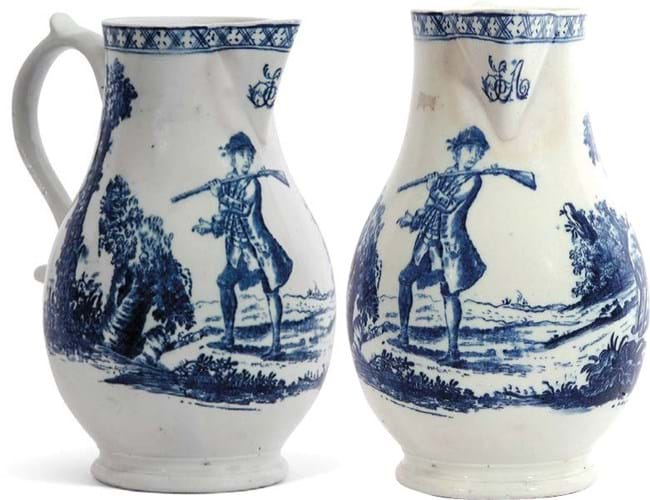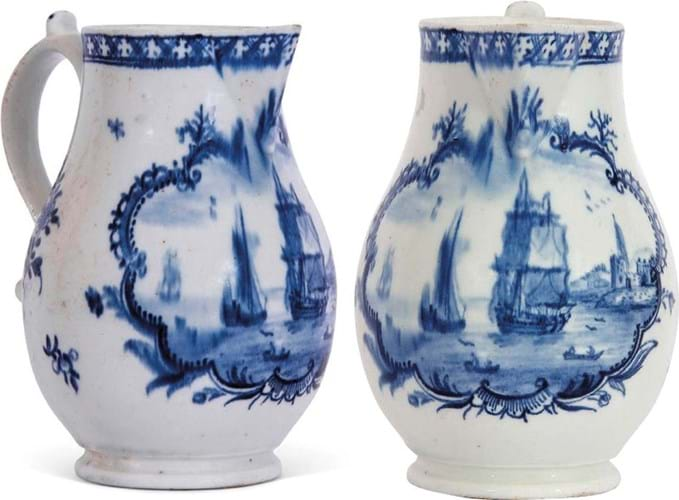Although by 1770 the firm had a warehouse in Cheapside, London, it survived longer than the average 18th century English porcelain factory, perhaps because it had less competition in the local market.
An 8in (19cm) documentary jug was the stand-out piece among 50 lots of Lowestoft offered by Keys (20% buyer’s premium) in Aylsham on May 12-13. Known as the ‘Aldred Jug’, its lip is inscribed with the initials SA, probably for Samuel Hingham Aldred, grandson of the Lowestoft merchant Obed Aldred, one of the four original partners in the Lowestoft factory. Samuel inherited many of his grandfather’s assets including parcels of land and buildings on Bell Lane that had been part of the factory site.
This is the only known inscribed piece of Lowestoft porcelain with a possible direct link to one of the owners of the factory. The copper plate for the transfer print of a hound and huntsmen is said to have been supplied by a Mr Gamble of Bungay and was the first example of copper plate printing on Lowestoft porcelain.
The jug has a collecting provenance dating back to the late 19th century and was previously owned by a succession of renowned Lowestoft collectors. These included William Rix Seago (who acquired a large part of his collection from the Browne family, descendants of the factory manager Robert Browne), FA Crisp and MM Paul. It featured in the bicentenary exhibition of Lowestoft porcelain in 1957 and in Bernard Watney’s English Blue and White Porcelain of the 18th century (1963).
Estimated at £5000-7000, it took £7900.
Ships sailing in
Another rare Lowestoft jug, a little smaller at 6in (14cm) high, was decorated in underglaze blue with a maritime scene of ships off the coast.
Several pieces of this type are pictured in Geoffrey Godden’s Lowestoft Porcelain, where they are attributed to the decorator Richard Powles (1763-1807).
They include the 5in (12cm) flask painted with four sailing ships and a shipbuilding scene sold for £24,000 when Bonhams offered the Godden collection in 2010.
Keys’ jug, with a label to the base for the Alison Bremner collection (elements of which were sold by Sotheby’s in 2011), was not a great firing, with some of the decoration obscured by the running of the glaze, but it nonetheless sold for £3200 (estimate £2500-£3000).
According to his obituary, Powles, a local artist of some skill who would later become a merchant in London, started work as a boy at the Lowestoft factory ‘to support his mother’ and remained there until he was ‘grown up’.
















